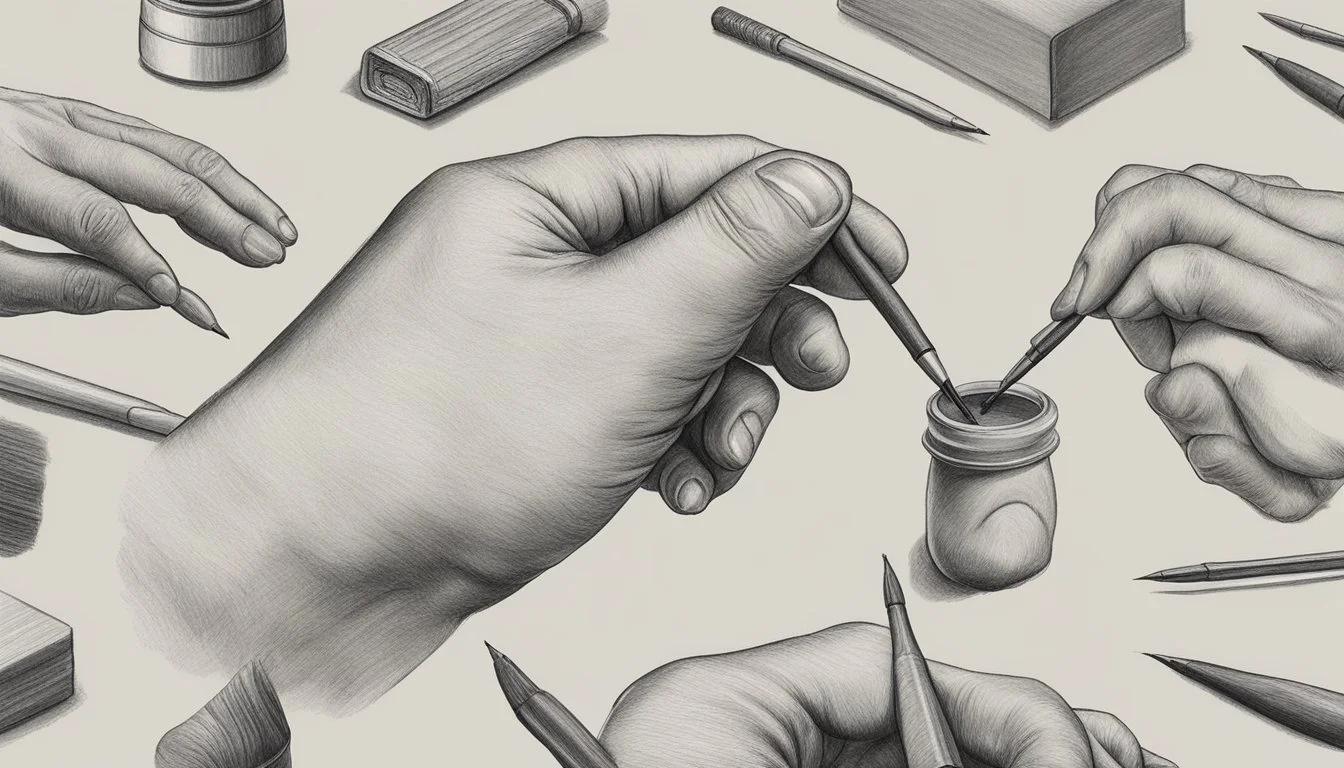Revealed: The Shocking Truth Behind 'Documentary' Pronunciation Mistakes!
Pronouncing "documentary" correctly can be tricky for English learners and native speakers alike. This common word, referring to films or programs that provide factual information, has a few subtle nuances in its pronunciation. The standard pronunciation of "documentary" in American English is "dah-kyuh-men-tuh-ree" with the primary stress on the first syllable.
British English speakers may use a slightly different pronunciation, placing more emphasis on the second syllable. Regional accents can also influence how the word is said. For example, some speakers may pronounce it more like "dock-you-men-tree" or "doc-you-men-tary" depending on their dialect.
Learning to pronounce "documentary" correctly can enhance communication skills and prevent misunderstandings. This is especially important for those working in film, journalism, or academia where the term is frequently used. Practicing with audio guides and listening to native speakers can help refine pronunciation and boost confidence when using this word in conversation.
Documentary Definition
A documentary is a non-fiction film or television program that presents factual information about real events, people, or subjects. It aims to educate, inform, or provide insight into various aspects of the world.
Genres and Styles
Documentaries encompass a wide range of genres and styles. Observational documentaries capture events as they unfold without interference. Expository documentaries use narration to guide viewers through a topic. Participatory documentaries involve the filmmaker interacting with subjects. Reflexive documentaries draw attention to the filmmaking process itself.
Some documentaries focus on historical events, while others explore current social issues. Nature documentaries showcase wildlife and environmental topics. Biographical documentaries delve into the lives of notable individuals. Each style employs different techniques to engage viewers and convey information effectively.
Historical Development
The documentary genre has evolved significantly since its inception. Early documentaries like Robert Flaherty's "Nanook of the North" (1922) blended reality with staged scenes. The 1960s saw the rise of cinéma vérité, emphasizing unscripted, fly-on-the-wall filmmaking.
Technological advancements have greatly impacted documentary production. The introduction of lightweight cameras and portable sound equipment in the 1960s allowed for more intimate and spontaneous filming. Digital technology has further democratized documentary-making, enabling a broader range of voices to contribute to the genre.
Modern documentaries often incorporate stylistic elements from fiction films, blurring the lines between genres. They may use reenactments, animation, or experimental techniques to enhance storytelling and audience engagement.
Pronunciation Fundamentals
Mastering the pronunciation of "documentary" involves understanding key linguistic elements. These include the sounds that make up the word and how emphasis is placed across its syllables.
Phonetics and Phonology
The word "documentary" consists of five syllables: doc-u-men-ta-ry. In American English, it's typically pronounced as /ˌdɑkjəˈmentəri/. The first syllable "doc" uses the short 'o' sound, similar to "doctor." The 'u' is reduced to a schwa sound, barely pronounced. The stress falls on the third syllable "men," pronounced with a short 'e' sound.
British English speakers may pronounce it slightly differently as /ˌdɒkjʊˈment(ə)ri/. The 'o' in "doc" is more open, and the 'u' may have a fuller sound. The final 'y' is pronounced as a short 'i' sound in both variants.
Stress and Intonation Patterns
The primary stress in "documentary" falls on the third syllable: doc-u-MEN-ta-ry. This stress pattern is crucial for clear communication. Secondary stress often occurs on the first syllable, creating a rhythm: DOC-u-MEN-ta-ry.
In sentences, "documentary" maintains its stress pattern. For example: "I watched an interesting DOC-u-MEN-ta-ry last night." The word's intonation may rise slightly at the end when used as a question: "Is it a DOC-u-MEN-ta-ry?"
Proper stress and intonation help listeners distinguish "documentary" from similar-sounding words and contribute to natural-sounding speech in English conversations.
Documentary Pronunciation Guide
The pronunciation of "documentary" varies across English-speaking regions. Key differences exist between American and British accents, with additional variations globally.
American English Pronunciation
In American English, "documentary" is typically pronounced as "dah-kyuh-men-tuh-ree" or "dah-kyuh-men-ter-ee". The stress falls on the first syllable. The "u" sound in the second syllable is often reduced to a schwa sound.
Americans tend to pronounce the "r" sound more distinctly. The final syllable is pronounced with a long "e" sound, similar to "tree".
British English Pronunciation
British speakers usually say "dok-yuh-men-tree" or "dok-yuh-men-tuh-ree". The stress remains on the first syllable. The "o" in the first syllable is pronounced more openly than in American English.
The "r" sound is less pronounced in British English, especially in non-rhotic accents. The final syllable may have a slight "uh" sound before the "ee".
Global Variations
Different English-speaking countries may have unique pronunciations. Australian and New Zealand accents often blend elements of British and American pronunciations.
In some regions, speakers may emphasize different syllables or slightly alter vowel sounds. Indian English, for example, might stress the third syllable more: "dok-yu-MEN-tri".
Language learners often struggle with the word's length and multiple syllables. Listening to native speakers and using online audio resources can help improve pronunciation.
Audio Resources
Audio resources provide invaluable tools for mastering the pronunciation of "documentary." These digital aids offer clear audio samples and interactive practice opportunities.
Online Dictionaries
Cambridge Dictionary and Britannica Dictionary offer audio pronunciations of "documentary" in their online platforms. Users can listen to native speakers articulating the word in both American and British English accents. These dictionaries often include phonetic transcriptions alongside the audio clips.
Some online dictionaries feature slow playback options, allowing learners to hear each syllable distinctly. Repeating the word after the audio sample helps reinforce proper pronunciation. Many of these resources are free and accessible from various devices.
Pronunciation Apps
Mobile apps dedicated to pronunciation training offer specialized features for perfecting the articulation of words like "documentary." These apps often use speech recognition technology to analyze users' pronunciations and provide feedback.
Popular pronunciation apps include interactive exercises and games to make learning engaging. Some apps offer visual representations of mouth movements and tongue positions for precise articulation. Users can record their own attempts and compare them to native speaker recordings.
Many apps allow learners to create personalized word lists for focused practice. Regular use of these tools can significantly improve pronunciation skills over time.
Practice Techniques
Mastering the pronunciation of "documentary" requires consistent practice using proven methods. Effective techniques focus on repetition, listening, and self-evaluation to refine pronunciation skills.
Repetition and Shadowing
Repetition is key to ingraining correct pronunciation. Say "documentary" out loud multiple times daily, focusing on each syllable. Break it down into smaller parts: "doc-u-men-ta-ry". Practice emphasizing different syllables to understand the word's rhythm.
Shadowing involves listening to native speakers and immediately repeating what they say. Find audio clips or videos featuring the word "documentary" and mimic the pronunciation in real-time. This technique helps train your ear and mouth to produce the sounds accurately.
Use online pronunciation guides that provide audio samples. Listen carefully to the stressed syllables and vowel sounds. Pay attention to the "u" sound in the second syllable and the quick "a" sound near the end.
Recording and Playback
Recording yourself saying "documentary" allows for objective self-assessment. Use a smartphone or computer to capture your pronunciation attempts. Listen back and compare your version to reference recordings.
Make multiple recordings over time to track your progress. Focus on problem areas identified through playback. Are you struggling with a particular sound or syllable? Isolate that part for targeted practice.
Ask native speakers or language partners to listen to your recordings and provide feedback. Their input can highlight subtle issues you might miss on your own. Incorporate their suggestions into your practice routine.
Try varying your speech rate when recording. Start slowly to ensure clarity, then gradually increase speed as you become more comfortable with the pronunciation.



